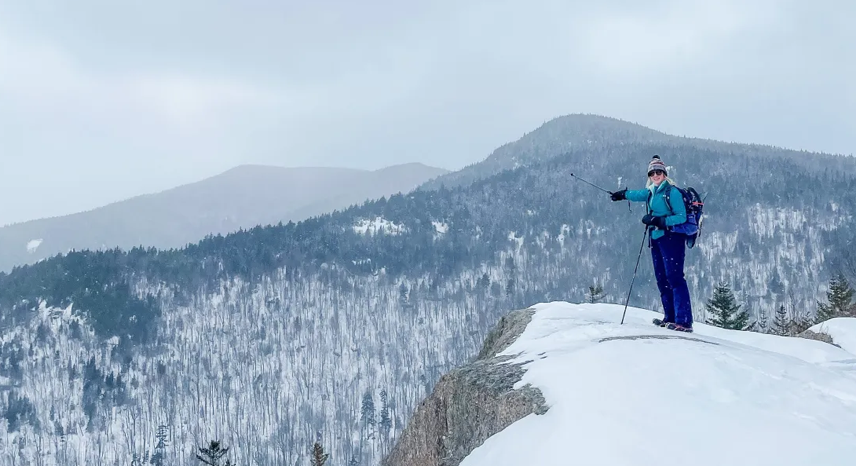5 Traveling Hacks to Ace the Art of Trekking Any Hill
Time 6 min(s) read
Trekking up a hill or mountain can be a life-changing experience. The fresh air, beautiful scenery, and the sense of accomplishment when you reach the top are unmatched.
Trekking up a hill or mountain can be a life-changing experience. The fresh air, beautiful scenery, and the sense of accomplishment when you reach the top are unmatched. But trekking, especially on steep hills, can also be challenging. Whether you’re abeginner or an experienced hiker, a few helpful tricks can make your trek more comfortable, safe, and enjoyable.
So, how do you ace the art of hill trekking? It’s all about being prepared and knowing some simple travel hacks that can make a big difference. Here are five essential tips to help you trek any hill with ease and confidence!
1. Pack Light, But Smart
When it comes to trekking, the weight of your backpack can either make or break your experience. Carrying too much weight will slow you down and tire you out quickly while packing too little could leave you unprepared. So, how do you strike the right balance?
Choose lightweight gear:
Opt for a lightweight backpack that won’t add too much extra weight. Make sure it has enough compartments to keep your essentials organized.
Pack only the essentials:
Think about what you’ll need on the trek. Essentials include water, snacks, a map or GPS device, sunscreen, a first aid kit, a rain jacket, and extra layers in case the weather changes. Don’t overpack with unnecessary items that will just weigh you down.
Hydration is key:
One of the most important things you’ll need on a trek is water. Invest in a hydration pack or carry a water bottle that’s easy to drink from while walking.
Snacks For Energy:
Pack light, energizing snacks like nuts, energy bars, or dried fruits. These foods will keep your energy levels up during the hike without weighing down your bag.
Remember, it’s all about packing what you’ll use. By packing light, you’ll be able to move more freely and enjoy the trek without unnecessary weight on your back.
2. Wear the Right Shoes
A good pair of shoes can be a game-changer when it comes to hill trekking. The right shoes provide the comfort, support, and grip you need to safely navigate uneven terrain and steep inclines. Here’s what to look for:
Comfort:
Your shoes should fit comfortably and provide enough room for your toes to move. Ill-fitting shoes can cause blisters and make your trek miserable. Make sure to break in your shoes before your trek to avoid any discomfort.
Grip:
Choose shoes with a strong tread and excellent grip. This will help prevent slips and falls on rocky or muddy paths, especially on steeper hills.
Support:
Your shoes should offer good ankle support to prevent injuries while walking on uneven ground. High-top trekking shoes are great for added support.
Waterproof:
If you’re trekking in damp conditions or near streams, consider shoes that are waterproof to keep your feet dry and comfortable.
A good pair of trekking shoes will make your hike much more comfortable and reduce the risk of injuries, allowing you to focus on enjoying the journey.
3. Pace Yourself and Take Breaks
Trekking up a hill is all about pacing yourself. It’s easy to get excited and start the hike too fast, but pushing yourself too hard early on can leave you exhausted and make the rest of the journey much harder. Here’s how to pace yourself:
Start slow:
In the beginning, take it easy and focus on finding a rhythm. Try to establish a steady pace that you can maintain throughout the hike.
Use the 10-20 minute rule:
For every 10-20 minutes of trekking, take a 1-2 minute break. This helps your body recover and prevents you from getting too tired.
Listen to your body:
If you feel fatigued, dizzy, or short of breath, it’s okay to slow down or take a longer break. Trekking is a long journey, and it’s important to conserve your energy.
Hydrate and refuel:
During your breaks, drink water and eat a quick snack to keep your energy up. Staying hydrated and nourished is crucial for maintaining your stamina on the hill.
By pacing yourself and taking breaks when needed, you’ll be able to enjoy the hike without burning out early. A steady pace will help you reach the summit comfortably and safely.
4. Dress in Layers for Comfort
The weather on a hill can change quickly. It might start warm and sunny at the bottom, but get chilly or windy at the top. Dressing in layers is the best way to stay comfortable throughout your trek, no matter what the weather does. Here’s how to layer up:
Base layer:
Start with a moisture-wicking base layer to keep sweat away from your skin. This will help you stay dry and comfortable during the hike.
Insulating layer:
Add an insulating layer like a fleece or light jacket for warmth. This will keep you cozy if the temperature drops.
Outer layer:
Finish with a waterproof and windproof jacket to protect against rain and wind. A lightweight, packable jacket is a great choice for trekking, as it can be easily stashed in your bag if the weather improves.
Hats and gloves:
If you're trekking in cooler weather, pack a hat and gloves to keep your extremities warm.
The key to layering is to add or remove clothing as needed, depending on your comfort level. This way, you can stay comfortable no matter how the weather changes.
5. Stay Mentally Strong and Enjoy the Journey
Trekking is just as much a mental challenge as it is a physical one. While the physical preparation and the right gear are important, your mindset plays a huge role in making your trek enjoyable and successful. Here’s how to stay mentally strong on your hike:
Stay positive:
Instead of focusing on how far you have left to go, take in the sights and enjoy the journey. Celebrate small milestones, like reaching a beautiful viewpoint or crossing a stream.
Keep a steady rhythm:
Maintain a consistent pace and breathing rhythm. Don’t stress about how fast others are going focus on your own experience.
Take in the scenery:
Take time to pause and appreciate the beauty around you. Trekking is about enjoying the outdoors and connecting with nature, so don’t forget to stop and take in the views.
Believe in yourself: Remind yourself that you can do it! Mental strength is key to completing any hike, especially when the trail gets tough.
By keeping a positive mindset and enjoying the journey, you’ll find that trekking becomes a rewarding and fulfilling experience. The more you enjoy the process, the more you’ll look forward to each hike.



